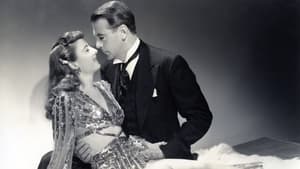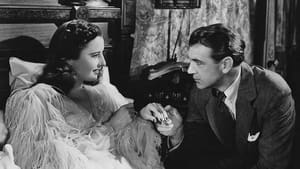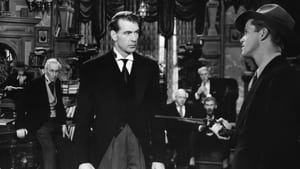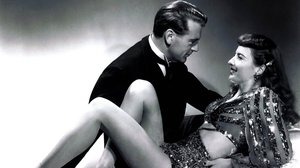Contact: info@alwanfilm.com
Video Sources 0 Views
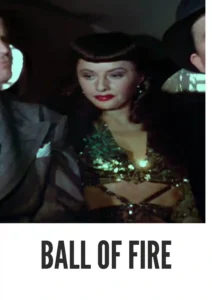
Synopsis
Ball of Fire 1941 Colorized Review: A Classic Romantic Comedy with a Twist

Introduction
In the golden age of Hollywood, few films could match the wit, charm, and delightful eccentricity of Ball of Fire (1941). Directed by Howard Hawks, this romantic comedy is a tale of contrasts, where academia meets the wild, untamed spirit of a nightclub singer. With a screenplay by the iconic Billy Wilder and Charles Brackett, Ball of Fire is both a celebration of language and an irresistible tale of love that brings opposites together in a most unexpected way. In this review, we’ll dive deep into the enduring appeal of Ball of Fire (1941), exploring its unforgettable performances, engaging plot, and significant impact on the comedy genre.
Check The Full Colorized Movies List
Check Our Colorized Movies Trailer Channel
Understanding Ball of Fire 1941 Colorized: Director, Cast, and Genre
Director’s Vision
Howard Hawks, known for his versatility in tackling a range of genres, from adventure to drama to comedy, brought his unique vision to Ball of Fire. His direction skillfully balances the film’s comedic elements with genuine emotional depth. Hawks had an innate talent for building memorable characters and creating dynamic relationships, and in Ball of Fire, his style shines as he brings together two starkly different worlds—an academic sanctuary and the lively streets of New York City. His keen eye for situational humor and timing elevates the film, helping it become a timeless example of Hollywood’s Golden Age comedies.
The Iconic Performance of Actors
The cast of Ball of Fire is led by two powerhouse performers: Barbara Stanwyck and Gary Cooper. Stanwyck, who plays nightclub singer Katherine “Sugarpuss” O’Shea, brings a lively, audacious energy to the film. Her performance captures the character’s street-smart savvy and playfulness, making Sugarpuss both a source of comedic relief and a surprisingly complex character.
Gary Cooper, in the role of Professor Bertram Potts, is the polar opposite of Stanwyck’s Sugarpuss. Cooper’s portrayal of the earnest, somewhat naïve academic is endearing and allows for a perfect “fish-out-of-water” scenario when his character encounters the spirited Sugarpuss. Cooper’s performance brings a charm to the role that emphasizes Potts’ vulnerability and innocence, while also showcasing his comedic timing—a quality not often seen in his more dramatic roles.
Exploring the Genre
Ball of Fire (1941) is a romantic comedy with a twist. While it employs many of the standard tropes of the genre, such as opposites attracting and a clash of social worlds, it brings a freshness to the genre through its unique setting and characters. The film combines elements of screwball comedy, with fast-paced dialogue and absurd situations, with a more subtle, charming romance. The blend of academic seriousness with streetwise slang creates a humorous and original storyline, making Ball of Fire a standout in the genre.
Exploring the World of Ball of Fire 1941 Colorized: Plot and Characters
Detailed Synopsis
Ball of Fire begins in an academic retreat, where Professor Bertram Potts (Cooper) and a group of eccentric scholars are working on a comprehensive encyclopedia. Potts, a linguistics expert, realizes that his knowledge of slang and street language is outdated. Determined to gather firsthand research, he ventures out into the streets of New York City, where he encounters nightclub singer Sugarpuss O’Shea (Stanwyck).
Sugarpuss, who’s on the run from the police due to her mobster boyfriend’s criminal activities, decides to lay low by joining Potts and the scholars under the pretense of helping with their research. As she settles into the academic environment, the clash between her world and that of the scholars generates countless comedic moments. Despite their contrasting lifestyles, Potts and Sugarpuss find themselves drawn to each other, and romance blossoms amidst the chaos.
Supporting characters, including the group of quirky professors and Sugarpuss’s gangster boyfriend Joe Lilac, add depth to the story. Each character has a unique personality that contributes to the film’s humor and charm, making Ball of Fire a delightful ensemble piece.
The Screenplay: Wit, Charm, and Language as a Character
The Genius of Wilder and Brackett
The screenplay, penned by Billy Wilder and Charles Brackett, is a masterclass in wit and humor. Known for their work on films like Sunset Boulevard and The Lost Weekend, the Wilder-Brackett duo was celebrated for their sharp dialogue and ability to balance comedy with drama. In Ball of Fire, their focus on language—specifically slang—adds an extra layer of humor and authenticity to the film.
The script’s playful use of language not only provides a basis for the story but also becomes a character in its own right. The clash between Potts’ academic diction and Sugarpuss’s streetwise slang creates countless humorous moments and highlights the contrast between the two worlds. The screenplay’s wit and clever use of language make it a cornerstone of the film’s success.
Development Over Time
While Ball of Fire was initially a product of its time, it remains remarkably relevant due to its clever handling of language and humor. The slang used in the film might seem dated to modern audiences, but it also serves as a historical snapshot, preserving the vernacular of the early 1940s. Wilder and Brackett’s screenplay is a brilliant exploration of how language evolves and the cultural significance of slang, making it a timeless piece of cinematic writing.
Character Analysis: Sugarpuss and Potts
The Complex Protagonist and Memorable Supporting Characters
Sugarpuss O’Shea is far from a typical romantic comedy lead. She is a strong, streetwise woman who isn’t afraid to use her charm to get what she wants. However, as the story progresses, we see a more vulnerable side to her character, revealing her desire for a life that goes beyond the smoky world of nightclubs and gangsters. Barbara Stanwyck’s portrayal brings depth and nuance to Sugarpuss, making her a character that resonates with audiences even today.
Professor Potts, on the other hand, is a delightful contradiction. His academic world is all he has ever known, and his innocence when it comes to the real world is both humorous and endearing. Gary Cooper’s portrayal emphasizes Potts’ earnest nature and his gradual transformation as he opens up to Sugarpuss’s influence. The supporting cast of professors, each with their quirks, adds a layer of warmth and humor to the film, making them an essential part of the story’s charm.
Influence and Legacy: Ball of Fire 1941 Colorized’s Impact on Cinema
A Template for Romantic Comedies
Ball of Fire has had a lasting influence on the romantic comedy genre, serving as a template for films that blend humor, romance, and culture clashes. The film’s success demonstrated that audiences enjoyed seeing unlikely couples and the humorous dynamics that arise when two contrasting worlds collide. Many romantic comedies in later years would draw on similar themes, creating a subgenre centered on opposites attracting.
The Wilder-Brackett Legacy
Billy Wilder and Charles Brackett’s collaboration on Ball of Fire further established them as a powerhouse writing team. Their work on this film showcased their ability to bring humor and heart to a story, cementing their reputation in Hollywood. Their subsequent work on films like The Major and the Minor and Double Indemnity would continue to define their impact on American cinema.
Themes Explored in Ball of Fire 1941 Colorized
Darkness, Morality, and Language
While Ball of Fire is primarily a comedy, it also delves into darker themes, particularly in its portrayal of mob influence and the morally ambiguous world of Sugarpuss. The film explores the concept of morality, with Sugarpuss finding herself torn between her past life and her new connection with the academic world. The language theme is also central to the film, highlighting the significance of communication, cultural identity, and the evolution of slang as a reflection of societal change.
Reception and Controversy Surrounding Ball of Fire 1941 Colorized
Initial Reviews and Audience Reactions
Upon its release, Ball of Fire was met with acclaim from both critics and audiences. Reviewers praised the film for its witty dialogue, engaging storyline, and strong performances by Stanwyck and Cooper. The chemistry between the leads and the originality of the screenplay were frequently highlighted as key factors in the film’s success.
The film also received several Academy Award nominations, including a nomination for Best Actress for Barbara Stanwyck. Ball of Fire remains a beloved classic, celebrated for its humor and its place in Hollywood’s Golden Age.
Where to Watch Ball of Fire 1941 Colorized Online
For those interested in watching Ball of Fire, several streaming platforms offer access to the film. Services such as Amazon Prime Video and Criterion Channel provide options for viewing, and the film is also available for purchase on DVD and Blu-ray. Its availability on streaming platforms has helped introduce Ball of Fire to new generations, keeping its legacy alive.
FAQs About Ball of Fire 1941 Colorized
Q: Who directed Ball of Fire (1941)?
A: The film was directed by Howard Hawks, known for his work in various genres, including comedy, adventure, and drama.
Q: Who wrote the screenplay for Ball of Fire?
A: The screenplay was written by Billy Wilder and Charles Brackett, a legendary writing duo responsible for several classic films.
Q: What themes are explored in Ball of Fire (1941)?
A: The film explores themes of language, morality, and the clash between different social worlds. It also touches on the concept of transformation and personal growth.
Q: How has Ball of Fire influenced romantic comedies?
A: Ball of Fire has had a lasting impact on the romantic comedy genre, particularly in its portrayal of opposites attracting and the humorous dynamics that arise from cultural contrasts.
Conclusion
Ball of Fire (1941) is a delightful, witty comedy that combines romance, humor, and social commentary in a way that few films have managed to replicate. Howard Hawks’ direction, combined with the sharp writing of Wilder and Brackett, brings to life a story that is both entertaining and thought-provoking. The film’s themes of language, morality, and transformation resonate with audiences even today, making it a timeless classic. Whether watched for the first time or revisited by longtime fans, Ball of Fire remains a beloved gem in the annals of Hollywood cinema.




